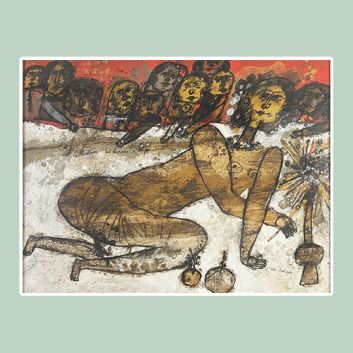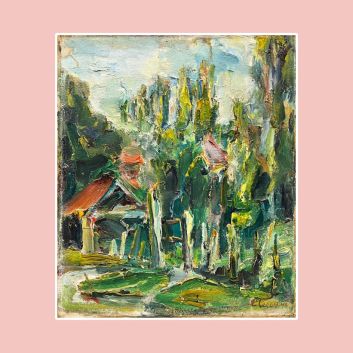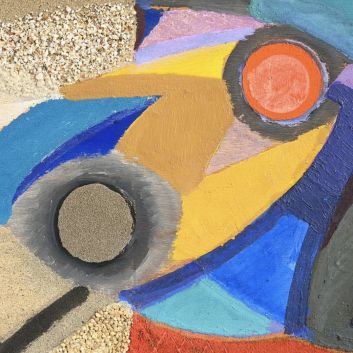Price and value of Jackson Pollock's works, drawings, paintings

Inventor of action painting, Jackson Pollock (1912 - 1956), is a key name in American expressionism. Pollock brought a new energy and spontaneity to the artistic gesture, greatly influencing the American school of painting.
If you own a work by or based on the artist Jackson Pollock and would like to know its value, our state-approved experts and auctioneers can advise you.
Our specialists will carry out a free appraisal of your work, and provide you with a precise estimate of its value on today's market. Then, if you wish to sell your work, we will guide you towards the best possible means of obtaining the best possible price.
Artist's rating and value
A major figure inAmerican Expressionism, Jackson Pollock quickly made a name for himself on the international art market.
Highly prized and sought-after, Pollock's paintings can fetch tens of millions of euros at auction, as demonstrated by his painting Number 17, 1951, which sold for over 46 million euros at Sotheby's in 2021. In this way, Jackson Pollock has established himself as an art market leader.
Order of value from the most basic to the most prestigious
Technique used | Results |
|---|---|
Print - multiple | From €65 to €307,550 |
Sculpture - volume | From €375 to €44,350 |
Drawing - watercolor | From €500 to €3,526,780 |
Oil on canvas | From €15,000 to €46,548,045 |
Response in less than 24h
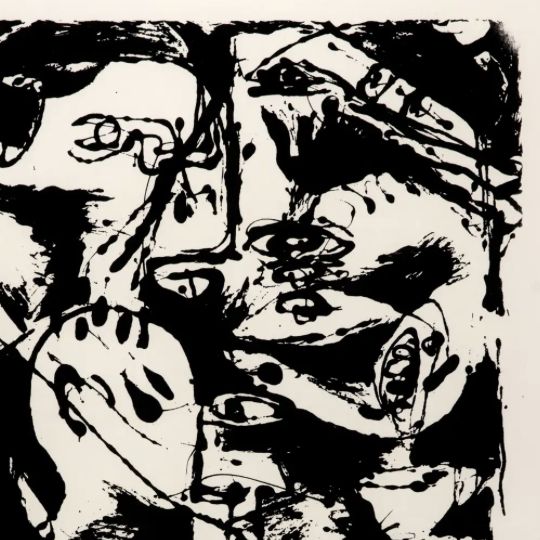
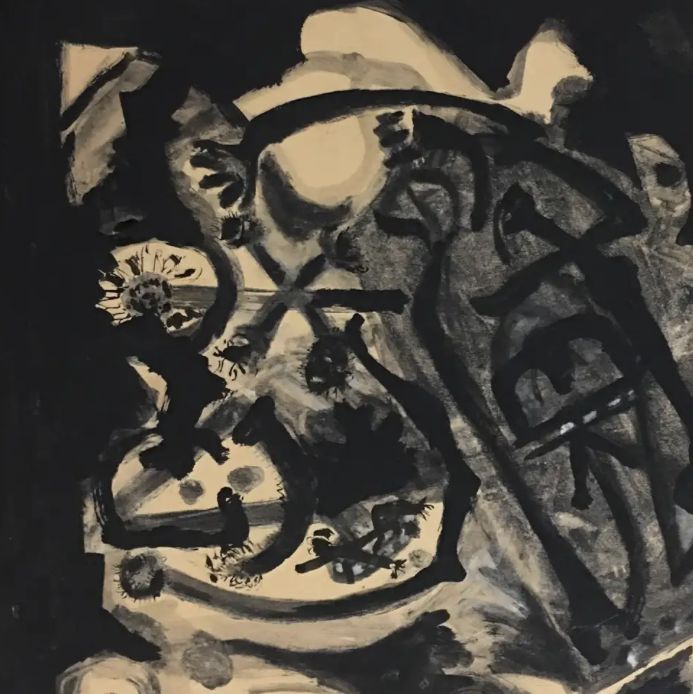
The artist's works and style
Jackson Pollock nurtured a deep passion forprimitive art and was inspired by Indian rituals. His painting style, at once surrealist and abstract expressionist, evolved over time through a combination of techniques.
The artist's canvases oscillate between figuratism and abstraction, sometimes distorted to create a sensation of undulation. Jackson Pollock also produced abstract portraits.
The artist has also produced a few sculptures, including bronze self-portraits and abstract glass sculptures.
The Life of Jackson Pollock
Jackson Pollock was born in Wyoming in 1912.
From an early age, Pollock was influenced by theprimitive art and Indian rituals he observed in his hometown. He spent these years in eight successive cities, in Arizona and California.
After dropping out of high school in 1927, already developing an addiction to alcohol, he briefly attended the Manual Arts School in California before moving to New York in 1930. There, he studied mural painting and life modeling with realist painter Thomas Hart Benton, before taking up sculpture. He was already fascinated by material and format.
He was attracted by Orozco's murals and frescoes. President Roosevelt and the New Deal policy will allow him to flourish in this format, thanks to projects aimed at helping artists.
He incorporated stencils and airbrushes into his work, and was greatly inspired by John Graham's Primitive art and Picasso. The study of the Guernica exhibition and other works by the Cubist master were to have a major influence on his work.
He is particularly focused on Picasso's minotaurs, which remind him of the primitive figures of the Indian peoples of his native region.
His career was regularly interrupted by successive rehabs and therapies, as the artist found it extremely difficult to extricate himself from his addictions. Returning to his studio in the late '30s, his work took a more expressionist turn.
He is also inspired by shamanic cultures, whose creative process is explained by Hubert Damisch. After the exhibition, Lee Krasner took a close interest in his work, bringing him closer to Willem de Kooning, Clément Greenberg and Hans Hoffman.
He coined the term "all over", corresponding to a process of arranging elements evenly around the painting. At the time, he was stylistically close to Janet Sobel.
From 1947 onwards, he began to work by pouring paint directly into the pot, as artists such as Georg Baselitz and Olivier Debré were doing at the same time in Europe. He controls the lines and fluidity of paint and pigment, unlike other abstract artists who let natural movement unfold.
From 1948 onwards, he no longer gave titles to his paintings, but only numbers, emphasizing the serial mechanism and defending the idea of privileging painting over the confusion that titles can sometimes bring.
He is considered the first American painter of abstract expressionism, and represented the United States at the Venice Biennale in 1950.
He coined the term "action painting" in 1952, to describe the painting technique and the American abstract art movement of the time. He went on to experiment with many other techniques, and began painting with syringes on his canvases.
The following years were marked by his countless Surrealist drawings, reminiscent of Picasso, as well as his first key works.
The artist painted on the ground and was inspired by the methods of the western Indians. Pollock often poured the paint directly onto the canvas. Known through the press, the artist experiments with different techniques and mediums, integrating figures into his works and playing with the effects of fluid or thick paint.
For him, his paintings have an autonomous life, and the painter's role is to let them emerge.
Pollock died drunk in a car accident in 1956.
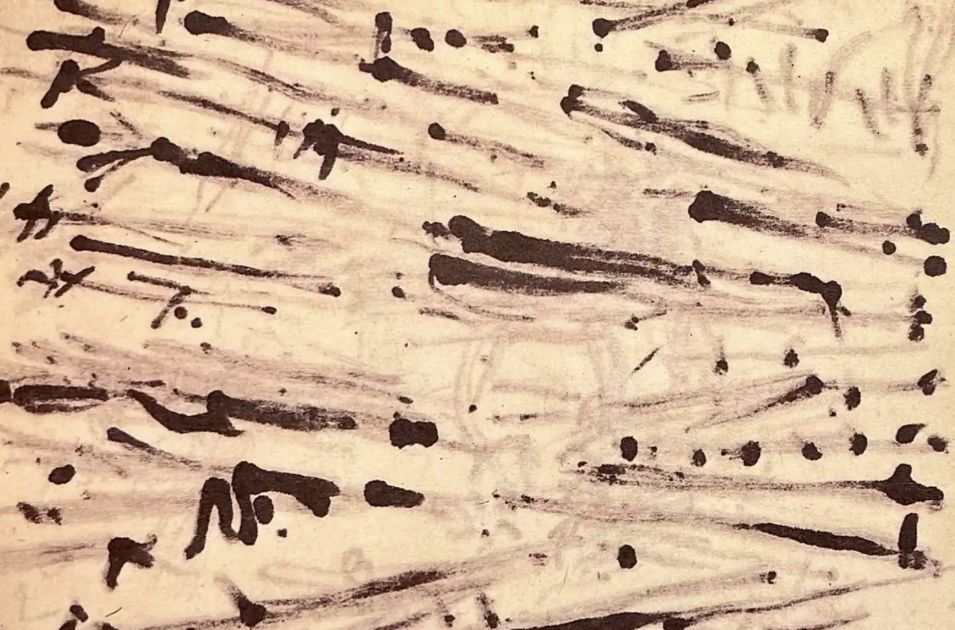
The role of Abstract Expressionism in the United States
Abstract Expressionism is a major artistic movement that emerged in the United States in the 1940s, marking a decisive turning point in the history of modern art.
This post-war period, marked by upheaval and cultural reinvention, saw the birth of a generation of artists seeking to explore the depths of the human soul through radically new forms and techniques.
Far from academic conventions and figurative representations, Abstract Expressionism is characterized by an unprecedented freedom of gesture and emotional intensity, reflecting the urgency and anguish of an era in search of meaning.
Jackson Pollock, the emblematic figure of this movement, embodies this break with previous artistic traditions.
His work, often seen as a form of total liberation of the artistic gesture, is characterized by the drip painting technique he developed from 1947 onwards.
This method involves pouring or spraying paint onto a canvas laid out on the ground, creating dynamic compositions in which each line seems both spontaneous and controlled.
Pollock does not seek to represent the visible world, but to express deep emotional and psychic states, giving rise to an art form in which the painter's gesture becomes the very essence of the work.
The Abstract Expressionism movement is characterized by a desire to push back the limits of form and content.
Unlike the European artists of Surrealism and Cubism, American Abstract Expressionists such as Pollock, Willem de Kooning and Mark Rothko rejected any attempt at figuration or explicit narrative.
They focus on exploring the inner forces of the human being, often through monumental works in which color, texture and movement create an almost tangible presence.
This approach, which emphasizes the act of creation itself, is what Pollock calls "action painting": a process in which the artist's energy and gesture are captured in the final work.
Understanding Jackson Pollock's work
The impact of Abstract Expressionism goes far beyond visual art. It reflects a cultural and philosophical climate in which individuality and authenticity are exalted. The artists of this movement seek to connect with an inner truth, often as a reaction against the dehumanization perceived in the modern world. In this, Abstract Expressionism is not only an aesthetic exploration, but also an existential quest, where each canvas becomes a battlefield for the artist's soul.
In Pollock's works, for example, canvases become living surfaces, where every drip of paint bears witness to a struggle between order and chaos, control and release. By refusing to give titles to his works from 1948 onwards, Pollock insists on the autonomous nature of his creations, inviting the viewer to a free interpretation, devoid of any textual reference. This approach reinforces the idea that art is a universal language, capable of expressing emotions and experiences that transcend words.
Abstract Expressionism, through major figures such as Jackson Pollock, not only redefined the boundaries of art, but also asserted America's place in the global artistic landscape. With its emphasis on pure expression and spontaneity of gesture, this movement opened the way to new forms of creation, influencing generations of artists and expanding the field of possibilities in contemporary art.
His signature
Not all of Jackson Pollock's works are signed.
Although there are variations, here is a first example of its signature:

Appraising your property
If you own a work by Jackson Pollock, do not hesitate to request a free evaluation by filling out our online form. A member of our team of chartered experts and auctioneers will contact you to provide you with an estimate of the market value of your Jackson Pollock work.
If you are considering selling your work, our specialists will also guide you through the various alternatives available to obtain the best possible price, taking into account market trends and the specific features of each work.
Response in less than 24h
Related topics
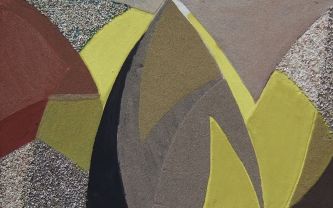
Rating and value of works, collages, paintings by Alfred Re...
Alfred Reth was an Austro-Hungarian painter of the École de Paris. His collages, paintings and drawings are sought-after at auction.
Read more >

2024 quotation and value of Cé...
César is a French sculptor of the Nouveau Réalisme movement who has produced works that are highly valued on the auction market.
Read more >
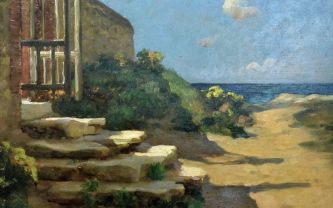
Rating and value of paintings by Virginie...
Virginie Demont Breton is a 19th-century naturalist artist whose paintings are highly valued at auction.
Read more >
Secure site, anonymity preserved
State-approved auctioneer and expert
Free, certified estimates
